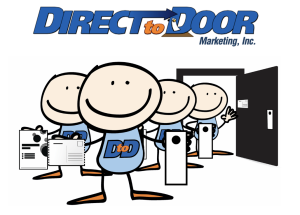
Understanding the Basics of Flyer Advertising
Flyer advertising is one of the oldest and most versatile forms of marketing. A flyer is a printed piece of promotional material, typically distributed by hand, posted in public spaces, or included in mail campaigns. Its primary purpose is to convey a message, promote a product or service, or announce an event in a concise and visually appealing manner. Despite the rise of digital marketing, flyers remain a powerful tool for businesses due to their tangible nature and ability to directly engage with local audiences.
In the digital age, where inboxes are flooded with emails and social media feeds are oversaturated, physical flyers offer a refreshing change. They provide a tactile experience that digital ads cannot replicate, making them memorable and impactful. Moreover, flyers are cost-effective, easy to produce, and can be tailored to specific audiences or events. Their simplicity and directness make them an enduring choice for businesses looking to make a strong impression.
The Role of Psychology in Marketing and Advertising
Marketing and advertising are deeply rooted in psychology. Understanding how people think, feel, and behave allows marketers to craft messages that resonate on a deeper level. Psychological principles such as attention, perception, memory, and decision-making play a crucial role in influencing consumer behavior. By tapping into these principles, advertisers can create campaigns that not only capture attention but also drive action.
When it comes to flyer advertising, psychology is particularly important. The design, layout, colors, and messaging of a flyer all work together to evoke emotions, build trust, and persuade the viewer. For example, a well-designed flyer can create a sense of urgency, inspire curiosity, or establish credibility—all of which are key to driving engagement and conversions. By leveraging psychological insights, businesses can ensure their flyers are not just seen but also remembered and acted upon.
The Power of Visual Hierarchy in Flyer Design
Visual hierarchy is a fundamental principle in design that determines the order in which elements are perceived. In flyer advertising, visual hierarchy guides the viewer’s eye to the most important information first, ensuring the message is communicated effectively. Elements such as text size, color, placement, and imagery all contribute to creating a clear and logical flow.
For instance, a bold headline at the top of the flyer immediately grabs attention, while supporting details in smaller text provide additional context. Strategic use of white space can also help emphasize key elements and prevent the design from feeling cluttered. By organizing content in a way that aligns with how people naturally scan information, businesses can maximize the impact of their flyers.
The Rule of Thirds and Its Application in Flyers
The rule of thirds is a design principle that divides a layout into nine equal parts using two horizontal and two vertical lines. Placing key elements along these lines or at their intersections creates a balanced and visually appealing composition. In flyer design, the rule of thirds can be used to highlight important information, such as the headline, logo, or call-to-action (CTA).
For example, placing a striking image in the top third of the flyer and the main message in the bottom third can create a dynamic and engaging layout. This approach not only draws attention but also ensures the flyer is easy to read and visually pleasing.
The Role of Contrast in Capturing Attention
Contrast is another powerful tool in flyer design. By using contrasting colors, fonts, and sizes, designers can make key information stand out and draw the viewer’s eye. For instance, a bright yellow headline on a dark background is more likely to grab attention than a muted color scheme. Similarly, pairing bold fonts with lighter ones can create a sense of hierarchy and focus.
Contrast is particularly effective in emphasizing CTAs, such as “Buy Now” or “Limited Time Offer.” By making these elements visually distinct, businesses can encourage immediate action and improve the overall effectiveness of their flyers.
The Psychology of Color in Flyer Advertising
Color is one of the most influential elements in design, as it has the power to evoke emotions and influence decision-making. Different colors are associated with different psychological responses, making them a critical consideration in flyer advertising. For example, red is often used to convey urgency or excitement, while blue is associated with trust and reliability.
When designing a flyer, it’s important to choose a color scheme that aligns with the brand and the message. For instance, a health and wellness business might use calming greens and blues, while a fast-food restaurant might opt for energetic reds and yellows. By understanding the psychology of color, businesses can create flyers that resonate with their target audience and drive desired outcomes.
Crafting Compelling Headlines and Copy
The headline is arguably the most important part of a flyer, as it’s the first thing people see. A strong headline grabs attention, sparks curiosity, and encourages the viewer to read further. To achieve this, businesses should use clear, concise, and benefit-driven language that speaks directly to the audience’s needs or desires.
In addition to the headline, the body copy should be persuasive and emotionally engaging. Using action-oriented language, emotional triggers, and storytelling techniques can make the message more compelling. For example, instead of saying “We offer discounts,” a flyer could say, “Save 50% today and treat yourself to something special!”
The Role of FOMO (Fear of Missing Out) in Flyer Messaging
FOMO, or the fear of missing out, is a powerful psychological trigger that can drive action. By creating a sense of urgency or exclusivity, businesses can encourage people to act quickly. Phrases like “Limited Time Offer,” “Only 10 Spots Left,” or “Sale Ends Tomorrow” tap into this fear and motivate immediate responses.
The Use of Social Proof in Flyers
Social proof, such as testimonials, reviews, or endorsements, can build trust and credibility. Including a quote from a satisfied customer or a statistic about the number of people who have benefited from a product or service can make the flyer more persuasive. For example, “Join over 10,000 happy customers!” adds a layer of authenticity and reassurance.
The Impact of Imagery and Graphics on Engagement
High-quality visuals are essential for creating an engaging and effective flyer. Images and graphics not only capture attention but also convey messages quickly and emotionally. For instance, a smiling customer holding a product can evoke feelings of happiness and satisfaction, while an aspirational image can inspire action.
Relatable or aspirational imagery is particularly impactful, as it allows the audience to see themselves benefiting from the product or service. Businesses should invest in professional photography or high-quality stock images to ensure their flyers look polished and credible.
The Importance of Target Audience Segmentation
Understanding the target audience is crucial for the success of any marketing campaign, including flyer advertising. By identifying the demographics, interests, and pain points of the audience, businesses can tailor their design and messaging to resonate more effectively. For example, a flyer targeting young professionals might use modern fonts, sleek designs, and language that emphasizes convenience and efficiency.
Segmentation also allows businesses to address specific needs or preferences. A fitness center, for instance, could create separate flyers for beginners, advanced athletes, and families, each with tailored messaging and visuals.
The Role of Call-to-Action (CTA) in Driving Results
A clear and actionable CTA is essential for converting interest into action. Whether it’s “Call Now,” “Visit Our Website,” or “Claim Your Free Trial,” the CTA should be prominently displayed and easy to understand. Using action verbs and creating a sense of urgency can make the CTA even more effective.
For example, “Sign Up Today and Get 20% Off!” not only tells the audience what to do but also provides an incentive to act immediately. The placement of the CTA is equally important—it should be positioned where it’s easily noticeable, such as at the bottom center of the flyer.
Testing and Iterating for Maximum Effectiveness
Testing is a critical step in optimizing flyer advertising. A/B testing different designs, headlines, and CTAs can provide valuable insights into what works best. For example, one version of a flyer might use a red CTA button, while another uses blue. By analyzing the response rates, businesses can determine which design is more effective.
Feedback from customers and data from distribution efforts can also inform improvements. Continuous iteration ensures that the flyer remains relevant and impactful over time.
Integrating Flyers with Digital Marketing Strategies
Flyers don’t have to exist in isolation—they can complement digital marketing efforts for a cohesive strategy. Including QR codes, social media handles, or website URLs on flyers can bridge the gap between offline and online engagement. For example, a QR code that leads to a landing page or a discount code can drive traffic and conversions.
Flyers can also be used to promote online events, encourage social media follows, or direct people to digital resources. By integrating flyers with digital campaigns, businesses can amplify their reach and create a seamless customer journey.


